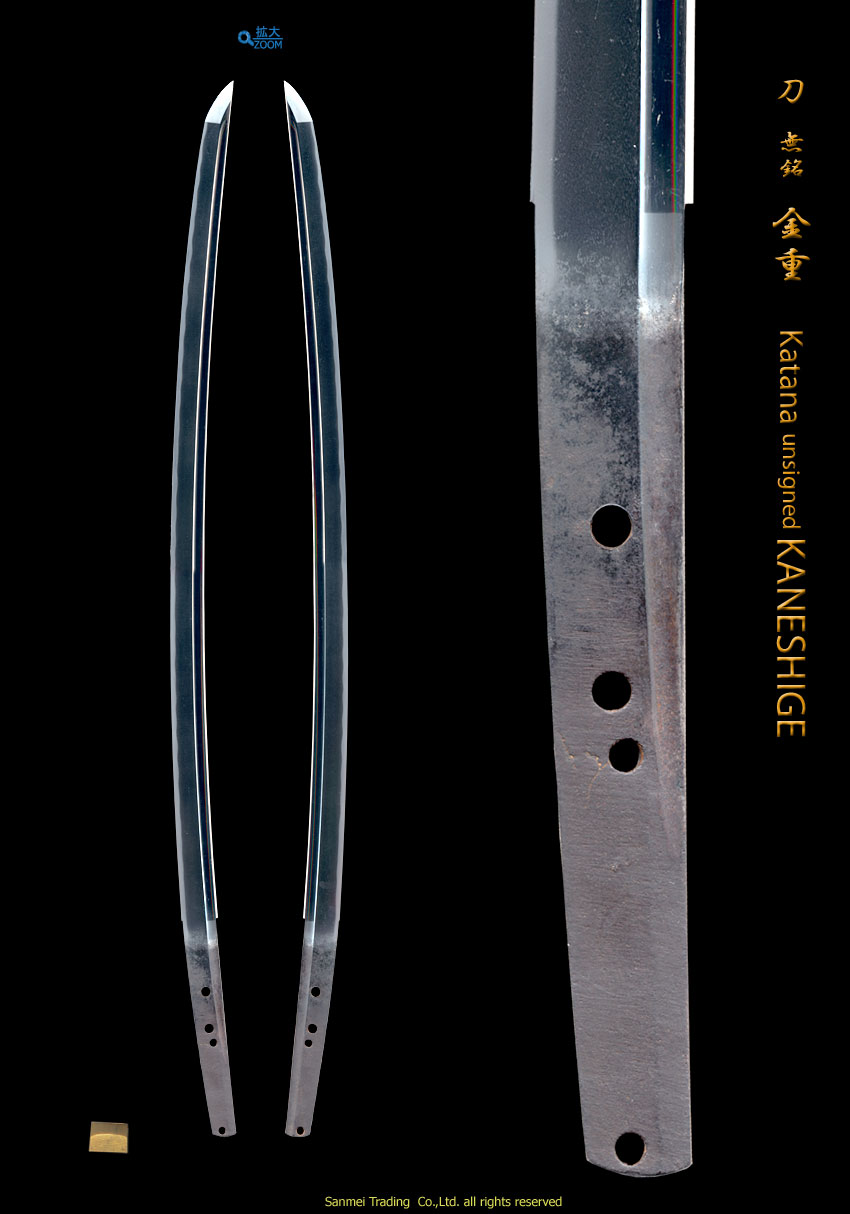Length of cutting edge70.1cm Curvature1.7cm Width of base30.5mm Width of Yokote20.6mm Thickness of base7.0mm
Forging pattern (kitae hada) : Kitae hada is conspicuous Itame hada mixing in with partial streaming hada ware. The entire hiraji is covered in with fine ji-nie (hard metal granules over the surface of the blade) and shows speckled, whitish utsuri reflection.
Tempering pattern (hamon) : Hamon is fine ko-nie base, starting with Suguha straight then ranging regular gunomes, shows shallow wavy indication. The interior of temper is deep in whitish NIOI mist, sparkling NIE glitter glows vividly bright.
Temper of tip (boshi) : Boshi is wavy and blushing up indication.
Tang (Nakago) : Nakago is O-suriage cut, unsigned. Ha-agari round heel shape. Four Mekugi-ana peg holes. File marks is Katte-sagari slanting left-word slightly.
The sword smith frontier of Seki, Mino province is said as MOTOSHIGE who came from Hōki Hibara province (now in Hōki town, Shimane pref.) to Seki, Mino province in 1229. However there are no existing works of him.
KANESHIGE has been considered as the actual frontier who used to be a Buddhist priest of Seisen-ji in Tsuruga, Echizen province (now in Fukui pref.) He was one of the 10 genius students of MASAMUNE. The existing signed works are only a few.
Dr. Honma Junji reported that [There were two generations during Nanbokucho period and the 1st smith KANESHIGE was a student of MASAMUNE] (note1). The recognized record of the work by 1st generation is 1320 and 2nd generation is 1363 (note2). It is said that KANESHIGE became a student when he was 61 years old along with Shizu Saburo KANEUJI to learn the newly-emerging Sōshu technique.
This katana shows well-kneaded moistened steel forging ware in which surface is deeply covered in sparkling Ji-fu style Ji-nie (speckled hard metal granules). Chikei (darkish Nie-lines) gushes out from steel. The regularly repeated Gunome pattern, the flash of Jigane scene and vividly bright glowing NIE glitter of temper, those are the most peculiarity of KANESHIGE.
The entire blade remains an excellent condition over the 650 years.
Gold foiled double layer habaki collar, preserved in a Shira-Saya plain wood mounting (Sayagaki written by Tanobe Michihiro).
note1)Dr. Honma Junji/Ishii Masakuni, Nihonto Meikan,Yuzankaku Shuppan, 1975
note2)Kousei Kotou Meikan, 1830

